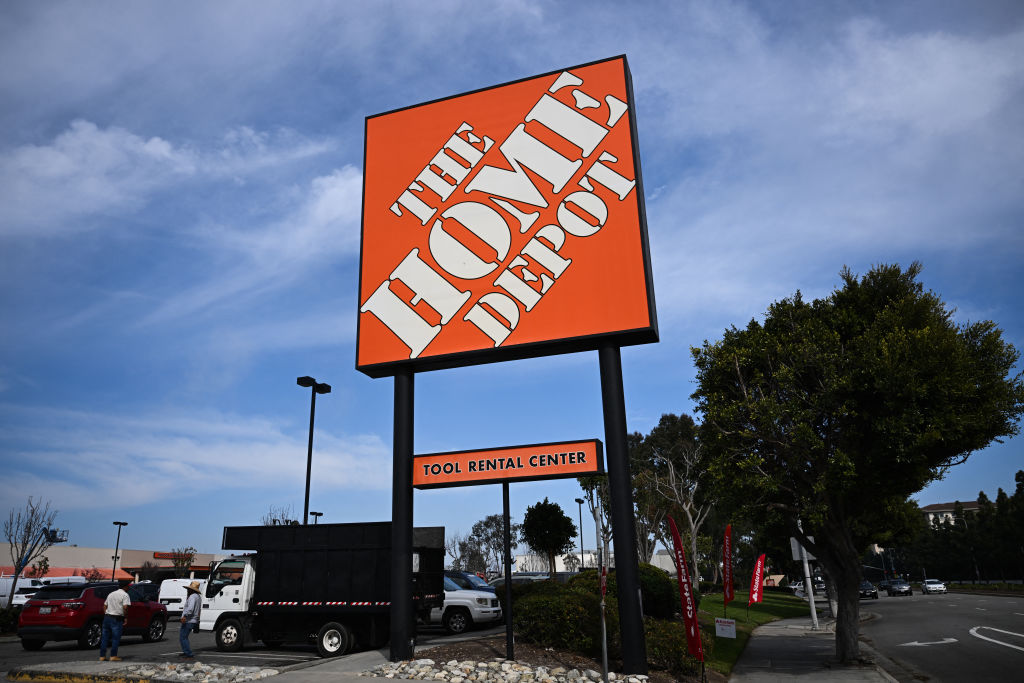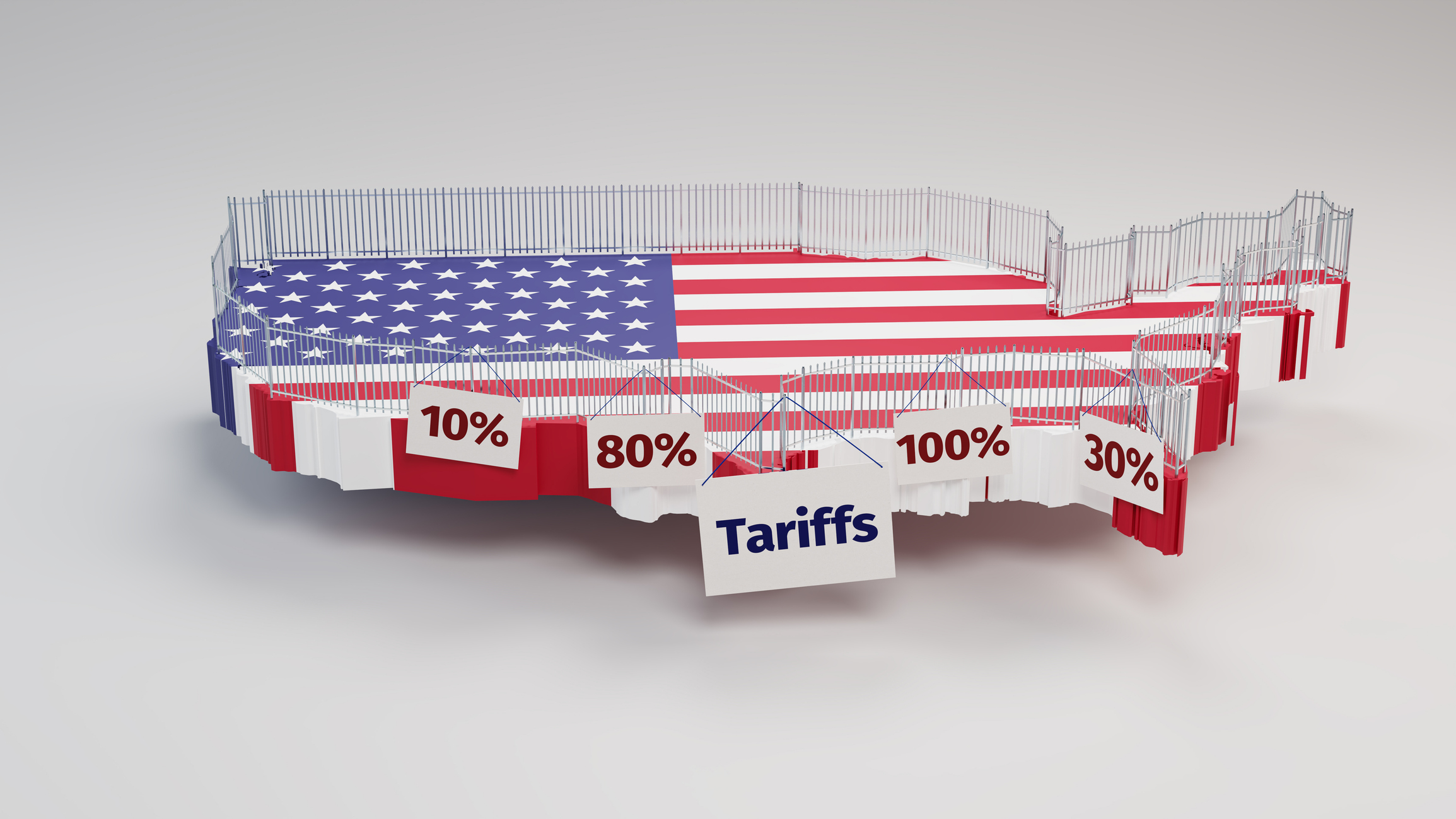How Nervous Investors Should Play the Trump Rally
Lock in some profits and rebalance your portfolio, but don't go overboard.

There’s an old Chinese curse that translates roughly into “may you live in interesting times.” Americans today certainly are living in interesting times, but few investors feel cursed. A nearly eight-year-old bull market has sprinted to a series of new highs since the presidential election. Standard & Poor’s 500-stock index, which closed at 2351 on February 17, has surged 9.9% since the close on November 8, barely wobbling along the way. That’s a good year’s worth of appreciation in just a bit more than three months.
But increasingly stretched valuations and off-the-charts political uncertainty raise the possibility that recent stock market blessings could quickly morph into a curse in the form of a correction. Now is a good time to make sure your portfolio is not only poised for growth, but also prepared for a pullback.
That the stock market can ignore the mayhem emanating from Washington almost defies belief. “It’s crazy,” says financial planner Michael Garry, of Yardley Wealth Management, in Newtown, Pa. “More than anything the market hates uncertainty.” There’s plenty of that to go around, with the first month of the new administration marked by controversial appointments and executive orders, as well as plenty of finger pointing and mass protests. But don’t let your politics get in the way of your portfolio, says Garry. “Be wary of investing based on ideological preferences—it’s just not effective,” he says.

Sign up for Kiplinger’s Free E-Newsletters
Profit and prosper with the best of expert advice on investing, taxes, retirement, personal finance and more - straight to your e-mail.
Profit and prosper with the best of expert advice - straight to your e-mail.
Business confidence is up, boding well for corporate spending. Consumers are also feeling buoyant, and their spending drives two-thirds of the economy. Economic indicators, ranging from purchasing-manager surveys to unemployment claims, are flashing green. “For the first time since 2009, we can confidently say that the economy is hitting on all cylinders,” says Jim Stack, editor of market newsletter InvesTech Research.
Corporate profits are rolling in. Over the past four quarters, 71% of companies in the S&P 500 have reported quarterly earnings that beat expectations (in a typical quarter only 64% deliver pleasant surprises.) For 2017, analysts on average expect robust earnings growth of 11%. Trump’s plan to cut taxes and roll back regulation could boost earnings further. “The bullish scenario is that Trump fast-tracks tax cuts, tax reform, repatriated earnings and deregulation,” says economist Ed Yardeni, of Yardeni Research. That would lift economic growth and could carry stocks to new highs in response to sharply rising earnings, he says.
But that scenario assumes that the combative spirit dominating politics at the moment—worthy of an HBO drama—won’t derail everything. “Alternatively, the ‘Game of Thrones’ will intensify, with a lot more casualties,” says Yardeni. “If Washington’s ability to govern the country in a civil manner suffers, so will the stock market.”
Moreover, the rally has stretched stock valuations to elevated levels. The S&P 500 trades at a bit less than 18 times expected earnings for the coming four quarters, according to FactSet Research, well above the 10-year average of 14.4. Since 1928, the S&P has traded this high relative to corporate earnings for the past 12 months only 10% of the time, according to InvesTech; make that 3% of the time if you take out the outlier periods of the tech bubble and the financial crisis. Indeed, the S&P 500 currently trades above a number of year-end forecasts, including ours. S&P Global sees the index ending 2017 at 2035, 13% below its recent close. Goldman Sachs strategists see the S&P hitting 2400 in the first quarter before fading to 2300 by year-end.
All of this suggests that the stock market may be due for a breather. The last bear market (a decline of at least 20%) ended in March 2009, and the last correction (a drop of 10% to 20%) ended in February 2016, following a drop of 15%.
The best course of action for investors might be to plan for the best—and the worst. Strategists at Bank of America Merrill Lynch are warning clients that policy uncertainty could cause wide market swings. They advise holding stocks that will benefit from economic growth, including financials, industrials, technology, energy and makers of non-essential consumer goods, as well as shares that tend to be more defensive, such as healthcare stocks, especially those that pay dividends. Stocks worth exploring include Home Depot (HD $143.07), Johnson & Johnson (JNJ, $118.84), Northrop Grumman (NOC, $243.58) and T. Rowe Price Group (TROW, $71.10). (Prices are as of February 17.)
It’s OK to lock in some profits after this strong rally. The best way to do that is to rebalance your holdings to make sure your portfolio still reflects your long-term goals, lightening up on assets that have appreciated the most and funneling the cash into laggards. Financial planner Garry says that small-company stocks with a value bent have “ripped through the upper band” of many of his clients’ desired allocation, while bond allocations and foreign-stock holdings are on the low side. Fidelity International Growth (FIGFX) and Baron Emerging Markets (BEXFX), both members of the Kiplinger 25, are two foreign funds worth exploring. Think of bond holdings mainly as a volatility dampener, says Garry, and stick with high-quality funds or issues with shorter-term maturities. Kip 25 member Vanguard Short-Term Investment Grade (VFSTX) fits the bill nicely.
Planners at the Planning Center, in Chicago, have recommended shifting some assets from stocks into short-term bonds. And some clients have beefed up cash positions. “That’s designed to let them sleep at night,” says planner Michelle Maton. “We were telling clients long before the election that we were due for a correction,” she adds.
Just don’t go overboard—you should be tweaking your portfolio, not blowing up your long-term plan, says Jeremy Bryan, portfolio manager at Gradient Investments, in Arden Hills, Minn. “Do things on the margin,” he says, shifting your portfolio allocation by four or five percentage points, 10 points tops. After all, he says, “If clients can’t handle a stock market correction, we don’t want them in there in the first place.”
Get Kiplinger Today newsletter — free
Profit and prosper with the best of Kiplinger's advice on investing, taxes, retirement, personal finance and much more. Delivered daily. Enter your email in the box and click Sign Me Up.

Anne Kates Smith brings Wall Street to Main Street, with decades of experience covering investments and personal finance for real people trying to navigate fast-changing markets, preserve financial security or plan for the future. She oversees the magazine's investing coverage, authors Kiplinger’s biannual stock-market outlooks and writes the "Your Mind and Your Money" column, a take on behavioral finance and how investors can get out of their own way. Smith began her journalism career as a writer and columnist for USA Today. Prior to joining Kiplinger, she was a senior editor at U.S. News & World Report and a contributing columnist for TheStreet. Smith is a graduate of St. John's College in Annapolis, Md., the third-oldest college in America.
-
 Stock Market Today: Stocks Soar on China Trade Talk Hopes
Stock Market Today: Stocks Soar on China Trade Talk HopesTreasury Secretary Bessent said current U.S.-China trade relations are unsustainable and signaled hopes for negotiations.
By Karee Venema
-
 2026 Disney Dining Plan Returns: Free Dining for Kids & Resort Benefits
2026 Disney Dining Plan Returns: Free Dining for Kids & Resort BenefitsPlan your 2026 Walt Disney World vacation now. Learn about the returning Disney Dining Plan, how kids aged three to nine eat free, and the exclusive benefits of staying at a Disney Resort hotel.
By Carla Ayers
-
 Stock Market Today: Markets Celebrate Trump's Tariff Détente
Stock Market Today: Markets Celebrate Trump's Tariff DétenteConsumer discretionary stocks led 10 of the 11 S&P 500 sector groups well into the green.
By David Dittman
-
 Home Depot's Winning Ways Fueled Its 100,000% Return
Home Depot's Winning Ways Fueled Its 100,000% ReturnHome Depot's wide moat leaves little room for competition – and shareholders have profited as a result.
By Louis Navellier
-
 How Do Tariffs Impact the Stock Market?
How Do Tariffs Impact the Stock Market?Trump's tariff announcement sent shockwaves through the stock market, and there are still a lot of moving parts. Here, we look at what impact tariffs have on the stock market and your portfolio.
By Charles Lewis Sizemore, CFA
-
 Fed Leaves Rates Unchanged: What the Experts Are Saying
Fed Leaves Rates Unchanged: What the Experts Are SayingFederal Reserve As widely expected, the Federal Open Market Committee took a 'wait-and-see' approach toward borrowing costs.
By Dan Burrows
-
 Fed Sees Fewer Rate Cuts in 2025: What the Experts Are Saying
Fed Sees Fewer Rate Cuts in 2025: What the Experts Are SayingFederal Reserve The Federal Reserve cut interest rates as expected, but the future path of borrowing costs became more opaque.
By Dan Burrows
-
 The Best Retail Stocks to Buy and Hold
The Best Retail Stocks to Buy and HoldE-commerce is a growing trend, but most folks still prefer to shop in stores. That makes these dominant retail stocks worth a closer look.
By Louis Navellier
-
 Stock Market Today: Stocks Retreat on Renewed Inflation, Interest Rate Questions
Stock Market Today: Stocks Retreat on Renewed Inflation, Interest Rate QuestionsStocks were lower and yields were higher on Tuesday, with markets reflecting the uncertain transition from campaign promises to real-world policies.
By David Dittman
-
 Is Home Depot Stock Still a Buy After Its Beat-And-Raise Quarter?
Is Home Depot Stock Still a Buy After Its Beat-And-Raise Quarter?Home Depot stock is struggling for direction even after the retailer's strong earnings and full-year outlook, but Wall Street isn't worried. Here's what you need to know.
By Joey Solitro